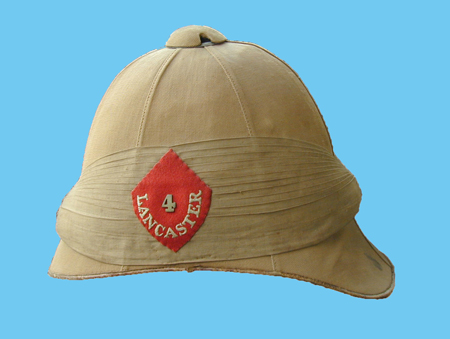
A 2nd Boer War example of a khaki Colonial helmet with flash to the 4th or Royal Lancaster Regiment. (Author’s collection)
The Colonial Pattern helmet was officially introduced for use by the British Army in 1877 1 although it had been worn in India several years prior to that date. The first Dress Regulations for the British Army (for officers only) published after this date was the 1883 edition and describes the helmet as follows –
The helmet was initially white but was often camouflaged on active service by the use of tea, mud, coffee grounds, in fact anything which would lessen its visibility. Later, khaki covers would be used, followed by an all khaki version. Wealthier officers often had both a white and a khaki version.
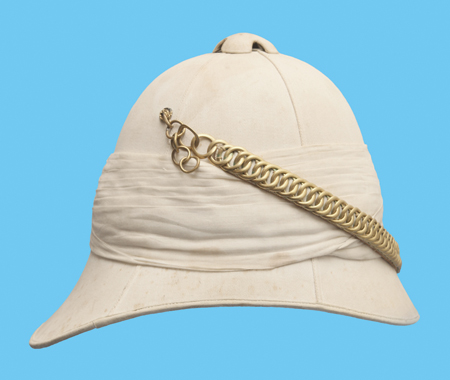
A white version of the Colonial Pattern helmet. Note the high-hook used to secure the chinchain when not worn down. (Author’s collection)
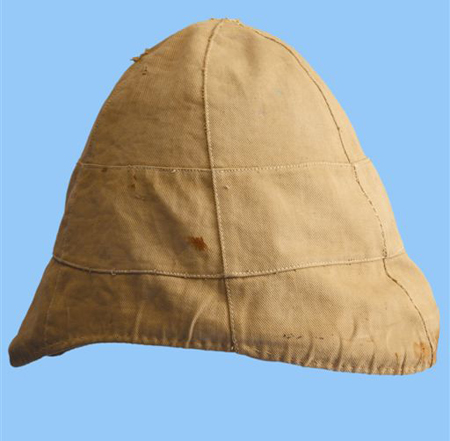
A khaki cover over a white helmet. Note that the drawstring used to tighten and secure the cover to the helmet is missing. (Author’s collection)
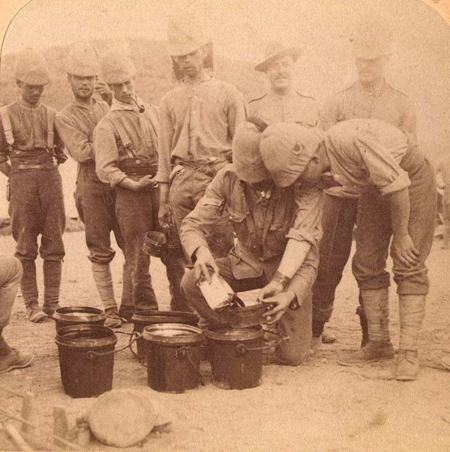
Soldiers of the Worcestershire regiment during the 2nd Boer War showing not only khaki covers but in one case a neck curtain (see here for neck curtains).
The interior of the helmet for officers was quite plush, rather less so for the Other Ranks. The leather headband was often topped with silk and the ventilation around the headband was provided either by corrugated buckram or by 8 cork spacers.
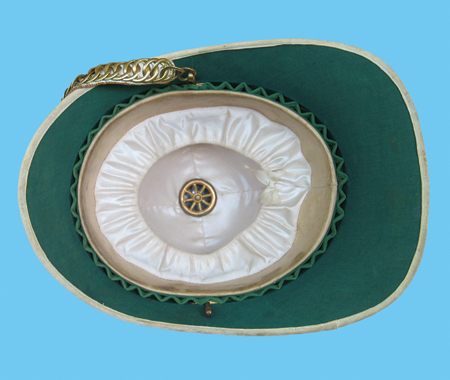
An especially sumptuous interior showing not only the use of silk but also the corrugated buckram ventilation. (Author’s collection)
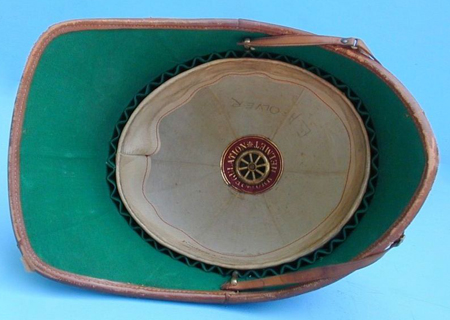
Another interior shot of an officer’s helmet without the addition of silk to the top of the headband. (Courtesy of Clive M. Law)
Additional ventilation was provided by a collet set into the top of the helmet. Into this was screwed either a cloth covered zinc button or a spike and base.
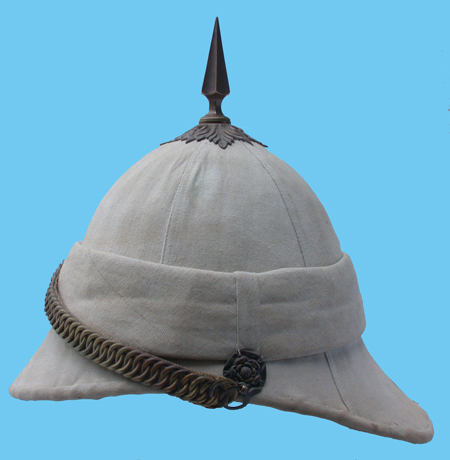
This example, made of cloth covered wicker, shows the use of a spike and base in place of the zinc button. (Author’s collection)
Whilst the helmet was initially made of cork, shortages of this material, and the parsimoniousness of governments, resulted in many helmets being made of wicker (see here for wicker helmets), covered with cloth and lined with sola pith. In the latter decades of the 19th Century wicker helmets were used by Other Ranks when supplied by the Indian Government. 2
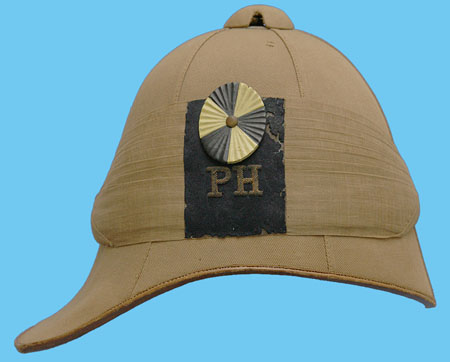
A beautiful example to Paget’s Horse, an Imperial Yeomanry unit which served in the 2nd Boer War. (Author’s collection)
Flashes and/or hackles were used early on, at least as early as the Ashanti War of 1874, to distinguish and identify regiments. The above example illustrates the flash, or a variation of the flash worn by Paget’s Horse (see here) during the 2nd Boer War 1899-1902.
The Colonial pattern helmet began to be replaced for officers in or before 1896 when the Wolseley helmet was taken up unofficially by British officers. This transition to the Wolseley took many years and was probably complete by about 1910/11 however photographic evidence exist that shows its being still in use as late as 1914. Perhaps for special occasions only, but why?
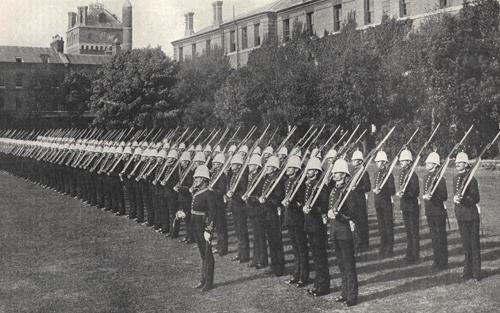
The King’s Bodyguard of 100 picked men of the Royal Marine Artillery on parade in December 1914 from the Navy & Army Illustrated. (Author’s collection)
Stuart Bates

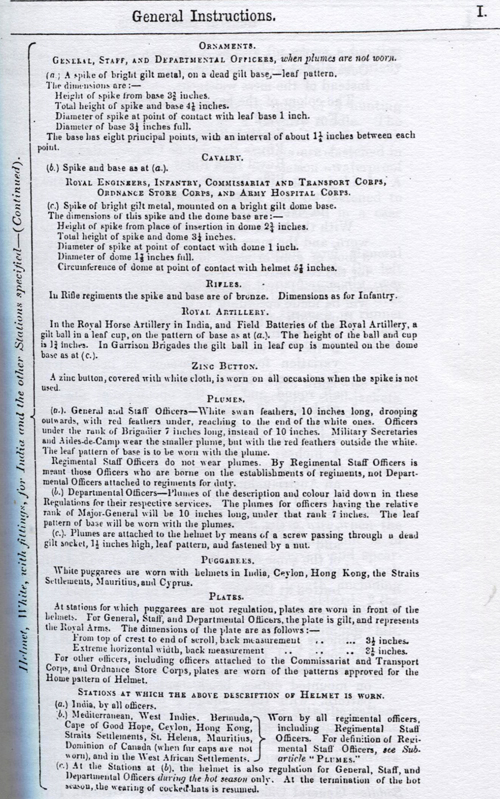
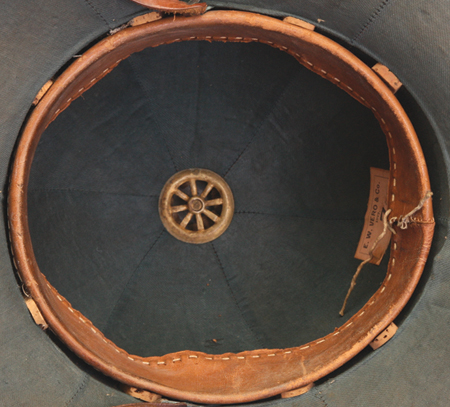
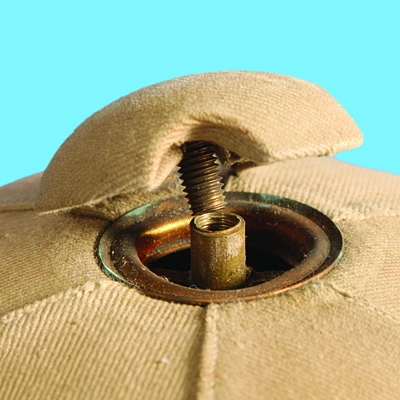
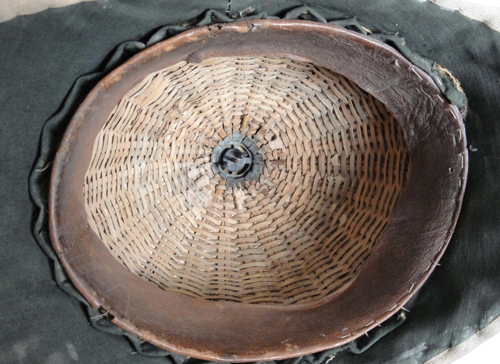
thanks for this Stuart… that Pagets Horse helmet is stunning
Great article up to your normal high standard
Please let me know if copper was ever used as a helmet lining/inner. I live in Pretoria, South Africa, and found what looks like a copper helmet on an old boer war battle field. If you mail me I will send you pictures.
Regards
Henk
Henk,
did you not receive my email as I haven’t received any photos.
Regards,
Stuart
very cool. i have one of these and was wandering if you would know what kind of liner it had and also there are a couple of numbers inside. Do know what they mean?
You would have to email me photos of the helmet, including shots of the interior for me to make any comment.
Regards,
Stuart